
Fly Boxes
It’s amazing how much money and/or time at the fly tying bench the typical fly angler can have invested in flies. Fly boxes protect that investment on the river and at home. The perfect fly box depends on the size and type of flies and where you plan to keep the boxes while fishing on the stream, in a tackle bag, or in your boat. We offer fly boxes for every kind of fly and every situation to keep you perfectly equipped for the situation at hand.
Read more
We offer fly boxes from well-known brands like Tacky, Cliff’s, Morell, Myran, Plan D, Umpqua, Wheatley, Angler's Image, Gamakatsu, Wynd, and our own PFF logo fly boxes in a variety of sizes and styles. Some of the different styles of fly boxes include the following:
Compartment Fly Boxes – This style of fly box features various compartments to keep flies separated and organized. Compartment fly boxes are excellent for dry flies because the delicate dry fly hackle doesn’t get squished and you can usually put a large number of flies in each compartment. They also tend to be inexpensive compared to other styles of fly boxes. A drawback to compartment fly boxes is that if you drop the fly box while the box is open, the flies may go flying all over the place.
Slit Foam Fly Boxes – Fly boxes incorporating slit foam have become the most popular kind of fly box over the last few years. Traditionally, foam was used in fly boxes and the point of the hook was driven into the foam to hold the fly. Over time, the foam would get damaged from hooks going in and out of the foam all the time. Slit foam allows the fly to be inserted into the slit in the foam so the foam isn’t damaged over time. Also, the slits tend to be evenly spaced so that a fly box full of flies looks like a perfect little army of flies, each one perfectly spaced so that the end result is a really sharp, organized appearance that is just plain cool looking.
Silicone Slit Fly Boxes – Take all of the advantages of the slit foam fly box but use silicone instead of traditional foam. The silicone is extremely durable and really holds flies well and since silicone tends to be more rigid than foam, the manufacturer can use a thinner cut of the silicone and still hold the flies very well. The result is a thin profile box that take less room in your pack, vest, etc. One drawback to silicone, however is that it does weigh more so large silicone insert boxes can weigh quite a bit more than a similar box which uses traditional foam.
All Foam Fly Boxes – Some fly boxes are designed entirely of foam. This includes boxes like the Morell fly boxes. Upon inspecting an all foam fly box, the immediate observation is that they weigh almost nothing. For that reason, all foam fly boxes are a great choice for anglers hiking long distances or carrying lots of fly boxes and wanting to keep the weight as light as possible. Almost all fly boxes will float quite well if you drop them in the water, but these fly boxes will float like nothing else.
Ultra-Thin Fly Boxes – Another big trend in fly boxes over the years has been ultra-thin fly boxes. These fly boxes may only be half an inch thick so carrying lots of separate fly boxes in one pocket is very possible. These ultra-thin fly boxes may feature slit foam or magnetic inserts to hold the flies. Either way, they are great for keeping large numbers of flies in a small space. The only drawback with this style of fly box is that there often isn’t enough room to hold medium or larger dry flies without smashing down the hackle, and even average sized streamer can be just too big to fit when the lid is closed. For these reasons, the ultra-thin fly boxes are usually used for small nymphs and midge flies… which work perfectly with these boxes.
Utility Style Fly Boxes – Utility style fly boxes are usually large fly boxes too big to store in a vest or even pack. They are usually used in one of two ways: One way would be for very large flies for pike, musky, bass, or big saltwater baitfish flies. The second way is for bulk storage of lots of flies that will be distributed into smaller fly boxes before a fishing trip. These large, utility style boxes work well if you fish from a boat and can store the utility boxes in a tackle bag or in a storage compartment in the boat.
Boat Boxes – Boat boxes are similar to utility fly boxes in size, but they usually feature slit foam inside rather than just simple compartments. Like the utility boxes, they are great for anglers fishing from a boat when portability isn’t an issue since they usually don’t fit in a pack or vest. Instead, boat boxes fit in a tackle bag or in a storage compartment in the boat. Boat box style fly boxes hold massive quantities of flies and/or very large flies and are popular for big streamers and dry flies, bass flies, and saltwater flies.
Foam Fly Patches – Foam fly patches are like fly boxes attached to the outside of a jacket, pack or vest. Foam fly patches usually have Velcro or a pin-on style attachment to attach the foam fly patch to whatever you like. Think of the foam fly patch as the modern version of the old fleece wool fly patch that your grandpa used. The foam fly patch is usually used to temporarily hold flies to let them dry or just so you don’t have to take the time to put every fly back in its box until the end of the day. Modern foam fly patches even hold barbless flies pretty well throughout a day of fishing.
Articulated Fly Boxes – This style of fly box is designed to hold flies that have an “articulated”, “stinger” or “trailer hook” style design where the hook is attached separately from the fly. This style of fly is very popular with steelhead anglers and some big trout streamers. Storing articulated style flies has always been a burden because the fly is always swinging all over the place inside the fly box. Fly box manufacturers have designed fly boxes to help with this issue and companies like Plan D have created some super cool fly boxes to keep those articulated flies organized and protected.
Waterproof Fly Boxes – Waterproof fly boxes are fly boxes that typically utilize a gasket around the edge of the fly box and a clasp that tightly locks the fly box closed so water cannot get into the box. Waterproof fly boxes are great for ultimate protection for your flies, especially on really rainy days or if you take a dunk in the river. They come in a variety of sizes and styles these days. Just remember, if your flies do get wet for some reason (like if you put them back in the box wet), it is a good idea to leave the box open and let the flies dry out for a while before closing the box and putting your gear away between fishing days.
-
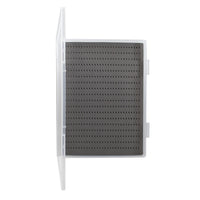 Anglers Image Magnum Ultra-Thin Fly Box - 522 Slits
Anglers Image Magnum Ultra-Thin Fly Box - 522 Slits
-
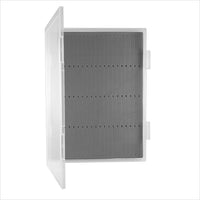 Anglers Image Magnum Ultra-Thin Fly Box - 60 Slits
Anglers Image Magnum Ultra-Thin Fly Box - 60 Slits
-
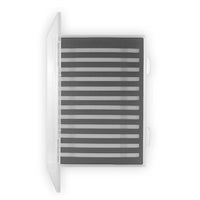 Anglers Image Magnum Ultra-Thin Fly Box - 756 Slits
Anglers Image Magnum Ultra-Thin Fly Box - 756 Slits
-
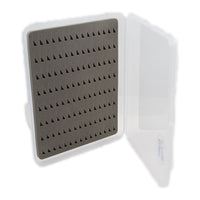 Anglers Image Medium Ultra-Thin Fly Box
Anglers Image Medium Ultra-Thin Fly Box
-
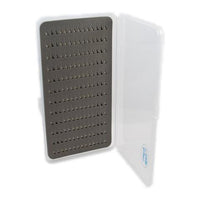 Anglers Image Ultra-Thin Slit Foam Fly Box
Anglers Image Ultra-Thin Slit Foam Fly Box
-
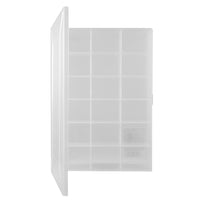 Anglers Image Utility Box - 18 Compartments
Anglers Image Utility Box - 18 Compartments
-
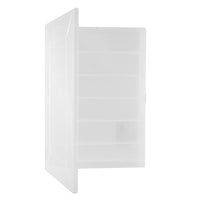 Anglers Image Utility Box - 6 Compartments
Anglers Image Utility Box - 6 Compartments
-
 Biodegradable Fly Puck
Biodegradable Fly Puck
-
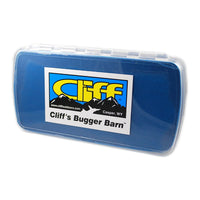 Cliff's Bugger Barn
Cliff's Bugger Barn
-
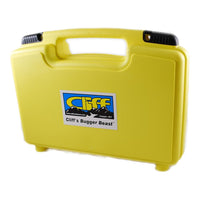 Cliff's Bugger Beast
Cliff's Bugger Beast
-
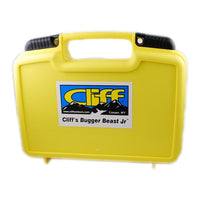 Cliff's Bugger Beast Jr
Cliff's Bugger Beast Jr
-
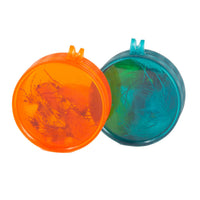 Fishpond Fly Puck
Fishpond Fly Puck
-
 Fishpond Predator Fly Puck
Fishpond Predator Fly Puck
-
 Fishpond Shallow MagPad Fly Puck
Fishpond Shallow MagPad Fly Puck
-
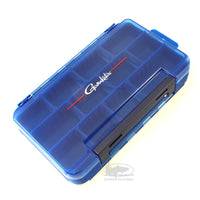 Gamakatsu G-Box - Duo Side 250
Gamakatsu G-Box - Duo Side 250
-
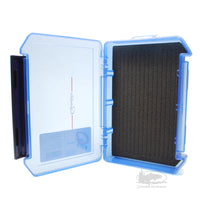 Gamakatsu G-Box - Slit Foam Case 3200
Gamakatsu G-Box - Slit Foam Case 3200
-
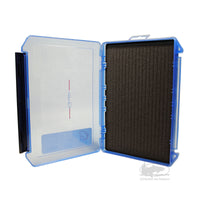 Gamakatsu G-Box - Slit Foam Case 3600
Gamakatsu G-Box - Slit Foam Case 3600
-
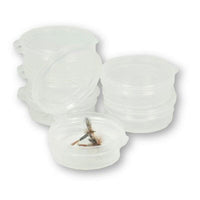 Hinged Lid Containers - 6 pk.
Hinged Lid Containers - 6 pk.
-
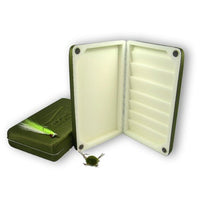 Morell Large Fly Box
Morell Large Fly Box
-
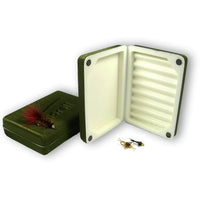 Morell Medium Fly Box
Morell Medium Fly Box
-
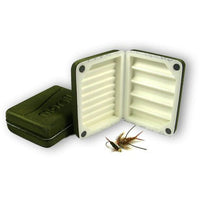 Morell Pocket Fly Box
Morell Pocket Fly Box
-
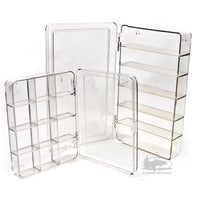 Myran Compartment Fly Boxes
Myran Compartment Fly Boxes
-
 Pacific Fly Fishers Adjustable Compartment Fly Box
Pacific Fly Fishers Adjustable Compartment Fly Box
-
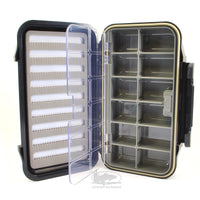 Pacific Fly Fishers Half Compartment Waterproof Fly Box
Pacific Fly Fishers Half Compartment Waterproof Fly Box
-
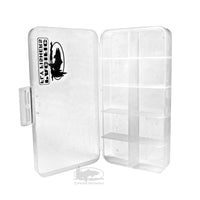 Pacific Fly Fishers Large 10 Compartment Fly Box
Pacific Fly Fishers Large 10 Compartment Fly Box
-
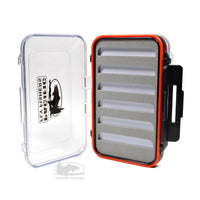 Pacific Fly Fishers Large Waterproof Fly Box
Pacific Fly Fishers Large Waterproof Fly Box
-
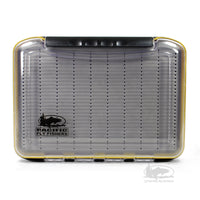 Pacific Fly Fishers Magnum Fly Box
Pacific Fly Fishers Magnum Fly Box
-
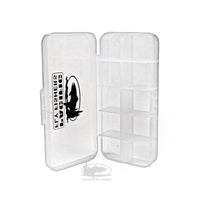 Pacific Fly Fishers Medium 10 Compartment Fly Box
Pacific Fly Fishers Medium 10 Compartment Fly Box




























